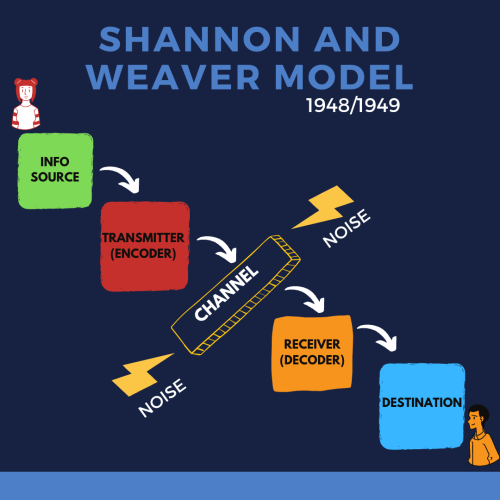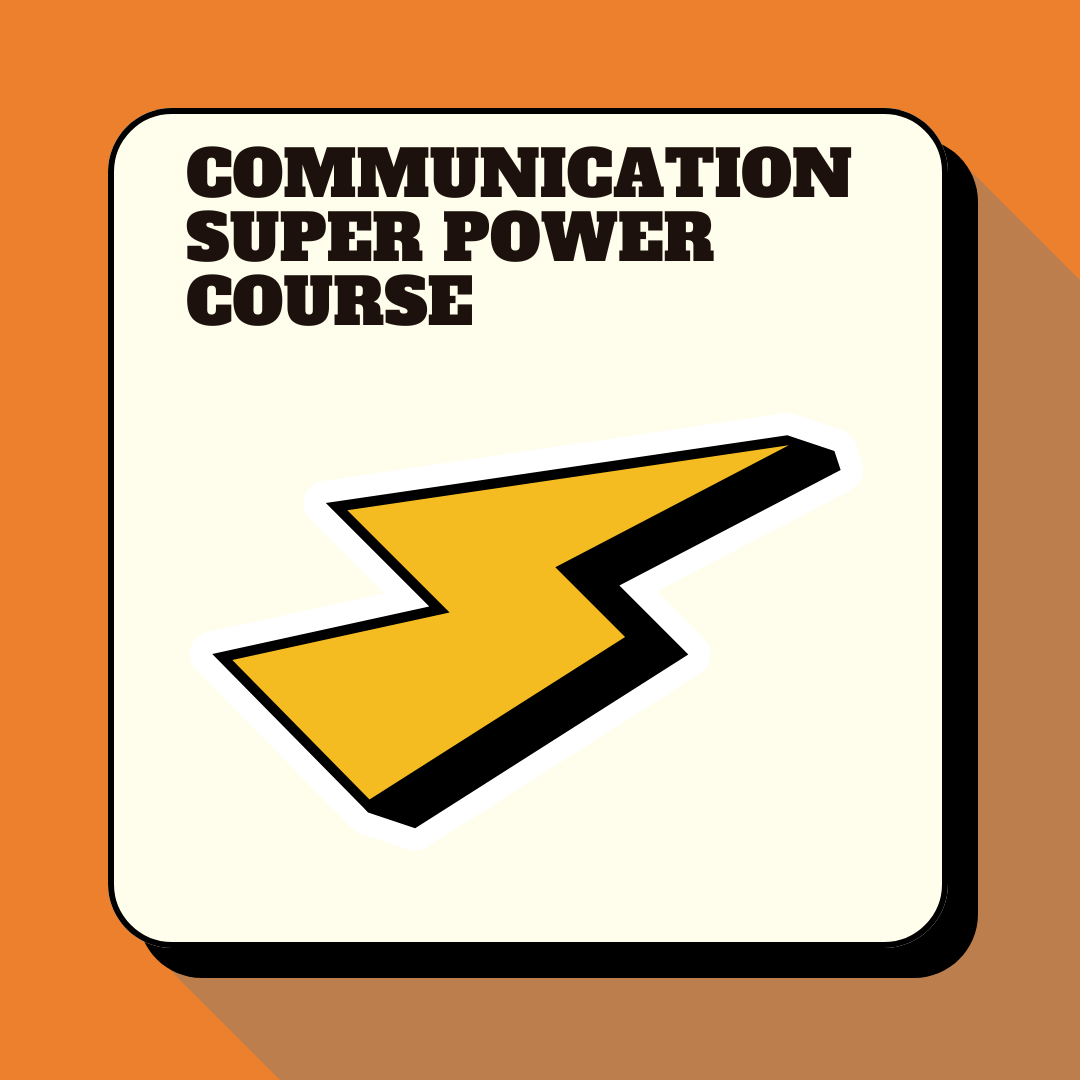
Whenever we communicate we are affected by noise. Noise is a Communication Theory concept regarding anything that can affect our message.
When we, as a sender, communication through a channel or medium, it can be affected by noise. This noise, which we'll cover in a minute, can affect how successful we are at achieving our purpose, with our audience.
It is really important to understand the concept of noise when it comes to communication in the workplace. Noise is everywhere. The more we understand noise, and what it is, the more chance we have of cutting through it to land our message and achieve our purpose.
Communication Basics
It sounds like it should be easy to communicate. We have an idea and we share it. Someone receives it and we're done.
Only it's not that simple.
Not only does the other person have to decode what we have sent, but we also need to be sure we sent the right thing in the first place. Add to this the mediums or channels we've chosen to use - and it all starts to get a little complicated.
Then steps in noise. Noise affects the mediums and channels we use - and also both the sender and the receiver too.
Knowing more about noise and the different forms it can take, can really help you to alter your message (or choose a different medium), to ensure you’re more effective at communicating. It can also help you understand why someone maybe doesn't understand your message - and ultimately, learn how to develop the skills and behaviours that mean your more effective with your own communication.
The Shannon and Weaver model of communication - and noise
Let's bring this to life with a simple communication model called The Shannon and Weaver model.
This was the first model I studied during my Media Science studies and is simple but clear at articulating how communication happens.
As with all models - it is wrong and incomplete - but it is helpful.

It all starts with a source. That source is you. You have an idea. You have something you wish to share. You have a story, idea, request - you have a purpose for communicating.
You then encode this purpose into a message, some form of structure that you are going to send. This could be through the words you use in conversation, or an email, or a presentation, or video, or poster - etc.
You then send this message via a channel or medium.
You send the email via the web, or you use words in a face to face conversation, or you speak at a conference, or stick a poster on a wall.
The audience (destination) then takes this message and decodes it. They make sense of it. They deconstruct it in their minds - and do something with the message (or not).
Noise is anything that affects anything during this "communication".
I teach these basic principles as some of the foundations of this in my Communication Workshop and Online Course.
Four different types of noise
The field of communication theory is always changing, so what I present here is my current stance, and what I teach leaders and managers. It will change as more insights and research come to light.
PHYSIOLOGICAL
This is about the sender and receiver (people) and their own physiology.
Think speech impediments, hearing challenges, articulation, clarity of speech, volume, illness and wellbeing.
This type of noise can clearly affect communication and care should be taken to understand the sender / receiver and cater accordingly.
Your own physiology is important here. I often say that our communication will be no more effective than we are as people. If we don't feel well, we won't communicate as well. If we have no energy, neither will our communication. If we're feeling under the weather, we won't listen as well.
The best communication happens when we feel well.
PHYSICAL
This is about those very obvious (and sometimes less obvious) physical forms of noise.
Think spam overload in your inbox where important messages are missed due to the "noise" of other messages.
Or information overload – like social media where there is so much content it’s often hard to find anything of use.
Physical barriers between people when communicating (other people, desks, monitors, no camera on video calls)
A noisy office, making it hard to hear anything, is also a classic noise.
Shady computer connections where the message is garbled, or didn't even get received.
PSYCHOLOGICAL
This is about how we feel about ourselves, our state of mind and how we are as people. This is very important indeed. For example:
- Are we a task focused individual (D on DISC) interacting with people who want to chat and socialise (I on DISC)?
- Are we working with task focused people who aren’t listening, or too keen to “crack on” even though it’s not clear what problem we’re trying to solve?
- How do we perceive ourselves?
- Do we feel confident? If so, our communication will be different to if we don’t feel confident.
- Are we tired and bored and not in the mood for listening?
- Are our emotions getting the better of us and we’re letting it affect us?
- Are we speaking with someone who we perceive to be higher power or more important than us?
- Nobody is ever more important than anyone else, but our brains don’t always acknowledge this.
Speaking to the COE may affect our ability to communicate, more than if we were talking to a peer.
The psychology of other people is also important. If someone is stressed, worried or upset, they may not listen as well. You may need to choose another time to talk to them. Maybe someone is feeling anxious about upcoming redundancies, and they take your message the wrong way.
There are lots of contexts in which communication happens - and the other person's psychology is a contributing factor. Always consider the events happening in your organisation when communicating - and tailor the messages appropriately.
SEMANTIC
This is all about the meaning of the words we use.
- Are we choosing the right words?
- There are some people who use long words to sound clever but people have no idea what they are talking about.
- Are we communicating in a language that is not our native one?
- What do our words mean and could they be interpreted incorrectly?
- Choosing the correct words and being clear about what we mean with the words we are using is important.
- Are we using jargon (a technical language belonging to a specific sub-group) when communicating with people who don’t know those jargon terms?
Semantics is super important. Sure, there are people who will nit pick about the correct meaning of a word, but they are trying to get to the truth. The better clarity we have when using words, the more likely your message will be decoded in the right way.
Closing out
As you can see, there’s a lot to think about when communicating. There’s also a lot of potential for noise to affect the message or the meaning within the message.
It’s on us to choose the right mediums, the right words and the right delivery. Sure, the listener/receiver shares some responsibility for good communication to happen, but the emphasis should be on us to be do our utmost to be successful in our communication.
Good communication is hard. It takes time, it takes practice and noise is an important element to understand.
Next time you’re communicating and it doesn’t land as you expect – is noise at play? What can you learn from this? How can you adapt?
What can you do differently next time?
- Could you shift the environment to reduce noise?
- Could you simplify the message, language and delivery?
- Are you using the right medium?
- Are you trying to reach too many different types of audiences? Narrow them down.
- Are you, in yourself, in a good place to communicate? Is the listener/receiver? Maybe you should postpone this interaction if you can?
Communication is hard but understanding a little about noise could really help you avoid ineffective communication and make your chances of effective communication much greater.
Find out more about the online communication super-power workshop here.

